Description
In order for students to understand how plates carry load and where reinforcing is required in concrete slabs or composite plates, they must be able to visualize how plates deform. This model is designed so that students can see how real plates deform under their own weight, and learn through experimentation about the additional deformations caused by various external loads.
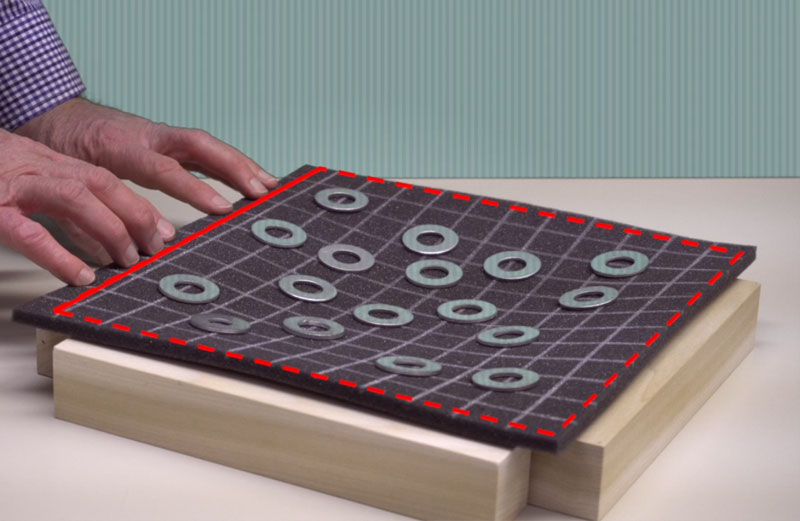
Learning Objectives
The model allows students to:
- Grasp the idea that plates carry load by curving in two orthogonal directions and by twisting (in contrast to beams, which only curve and do so only along their axial direction)
- Learn to use a short ruler held on edge against the surface of a plate to obtain a sense of its curvature along the direction of the ruler
- Verify that plates can experience independent curvatures in orthogonal directions
- By considering in-plane axis systems with different orientations at a suitable point on the plate surface, explore the fundamental relationships that exist between surface curvatures and twist (i.e., explore the properties of the Second Fundamental Form)
- Observe how plates deform under their own weight (dead load)
- Apply various external point and distributed loads (live loads) and observe their effects on plate deflection
- Observe how boundary conditions and changes in them affect plate shape
- Compare the deflection patterns of different kinds of plates with various loads
- Begin to develop an intuition for the deformed shapes that plates of various sizes, shapes and boundary conditions will take under various loads
- Predict points of maximum deflection
- Anticipate points of positive and negative curvature in different directions
- Begin to understand where and on which side of a concrete slab or composite plate reinforcing would be needed
- Use weigh scales to observe how applied loads are transferred to supporting beams and columns
- Prepare to learn about tributary areas
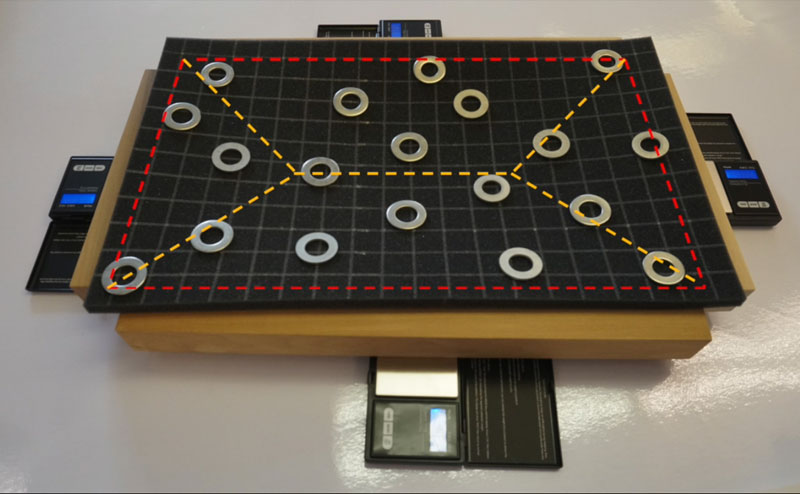 Figure 1 – Weigh scales allow the loads on the supporting beams to be measured, and prepare the way for a discussion of tributary areas.
Figure 1 – Weigh scales allow the loads on the supporting beams to be measured, and prepare the way for a discussion of tributary areas.
Protocol
For ideas on how students can use the “Plate Bending” model, please view this video.
Equipment Design
Our design consisted of wood blocks that support flexible foam “plates” of various sizes, shapes and thicknesses, and external loads are provided by metal washers. All components are simple and inexpensive to build, and the dimensions of the components are not crucial to the operation of the model, provided that the deflection of the foam is clearly visible. Optional weigh scales allow students to investigate the transfer of load from the plate to its supports.
As a technical side note, plate bending theory indicates that in-plane effects can become important when plate deflection reaches one-quarter of the plates thickness. Based on this criterion, all of the plates in this model undergo so-called “large deflection”. However, under most circumstances the grossly amplified deflections that the model produces are consistent with those produced in real-world plates.
For the sake of durability and colour stability, we used grey foam of the type often used for “case inserts”. We found that “furniture foam” discolours with time, it tends to take a “deformational set” if not stored under ideal conditions, and its mechanical properties seem to vary considerably with age and other factors. Our aim was to design models that would remain effective and visually attractive for 5 to 10 years.
It was difficult to find a single plate design that would provide visible deflections under self weight but could still carry meaningful applied loads without excessive deflection or even collapse. As a result, a series of foam slabs of different size and thickness were included in the model kit. Our largest plate was 300 x 500 mm, a size that essentially filled the storage tubs we chose to use (Fig. 2). We also chose a 300 mm square and a 300 x 200 mm rectangle, which together cover the same area as the larger plate. Grid lines with a spacing of approximately 30 mm (a little more than 1 inch) were applied to one face of the foam slabs using a paint pen so that students could more easily see the deflection and curvature of the plates.
The foam pieces we used were:
300 x 500 x 10 mm (12 x 19½ x 3/8 inches)
300 x 500 x 13 mm (12 x 19½ x ½ inches)
300 x 300 x 13 mm (12 x 12 x ½ inches)
300 x 20 x 13 mm (12 x 7½ x ½ inches)
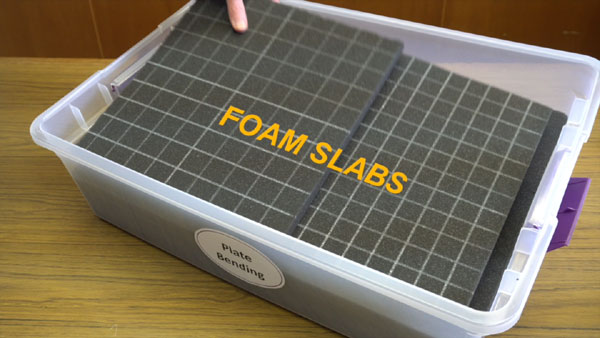 Figure 2 – Some of the foam slabs (plates).
Figure 2 – Some of the foam slabs (plates).
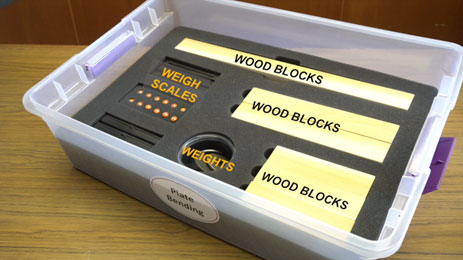 Figure 3 - The other components of the model (wood blocks, container for washers, weigh scales and batteries together with the foam case insert) provide a flat surface on which the plates can rest.
Figure 3 - The other components of the model (wood blocks, container for washers, weigh scales and batteries together with the foam case insert) provide a flat surface on which the plates can rest.
Wood Blocks
The two longer sets of wood blocks were sized to support the edges of the square and large rectangular foam plates (Figs 1 and 4). The shorter blocks were designed as support columns (Fig. 5). Our blocks were made from poplar lumber, but other hardwoods or softwoods could also be used.
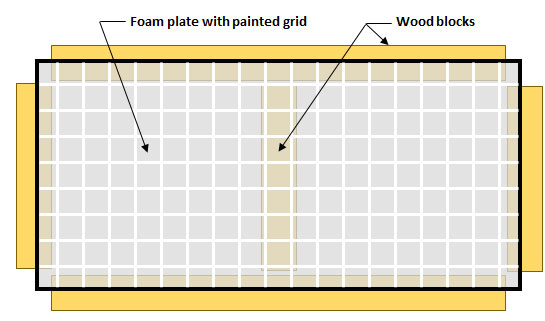 Figure 4 – Wood blocks provide simple support around the perimeter of a rectangular plate and in the short direction across its middle.
Figure 4 – Wood blocks provide simple support around the perimeter of a rectangular plate and in the short direction across its middle.
Our wood blocks were:
40 x 40 x 450 mm (nominal 2 x 2” lumber x 17¾”) (2 pieces of this size)
40 x 40 x 250 mm (nominal 2 x 2” lumber x 9¾”) (4 pieces)
40 x 40 x 150 mm (nominal 2 x 2” lumber x 6”) (6 pieces)
Washers
The washers were sized to produce suitable deflections in the foam plates. We used washers with an inside diameter of approximately 10 mm (3/8” to 1/2”) to produce distributed loads, and we used a single larger washer with an ID of 25 mm (1”) to produce a concentrated load.
Weigh Scales
The weigh scales are optional, but they allow students to investigate how load is transferred through a plate to its supporting beams or columns (Figs 1 and 5).
 Figure 5 – Measuring the Reactions of a Column-supported Plate
Figure 5 – Measuring the Reactions of a Column-supported Plate
Our heaviest wood blocks had a mass of 0.36 kg, and the expected maximum weigh scale loading was approximately 0.6 kg. So, we used weigh scales (jewelry scales) with a capacity of 1 kg. Six scales were included in the kit to accommodate students who might want to support a large rectangular plate using up to six columns (all six short wood blocks).
The weigh scales we used were: American Weigh Scales, Model AWS-1KG (1000 g x 0.1 g).